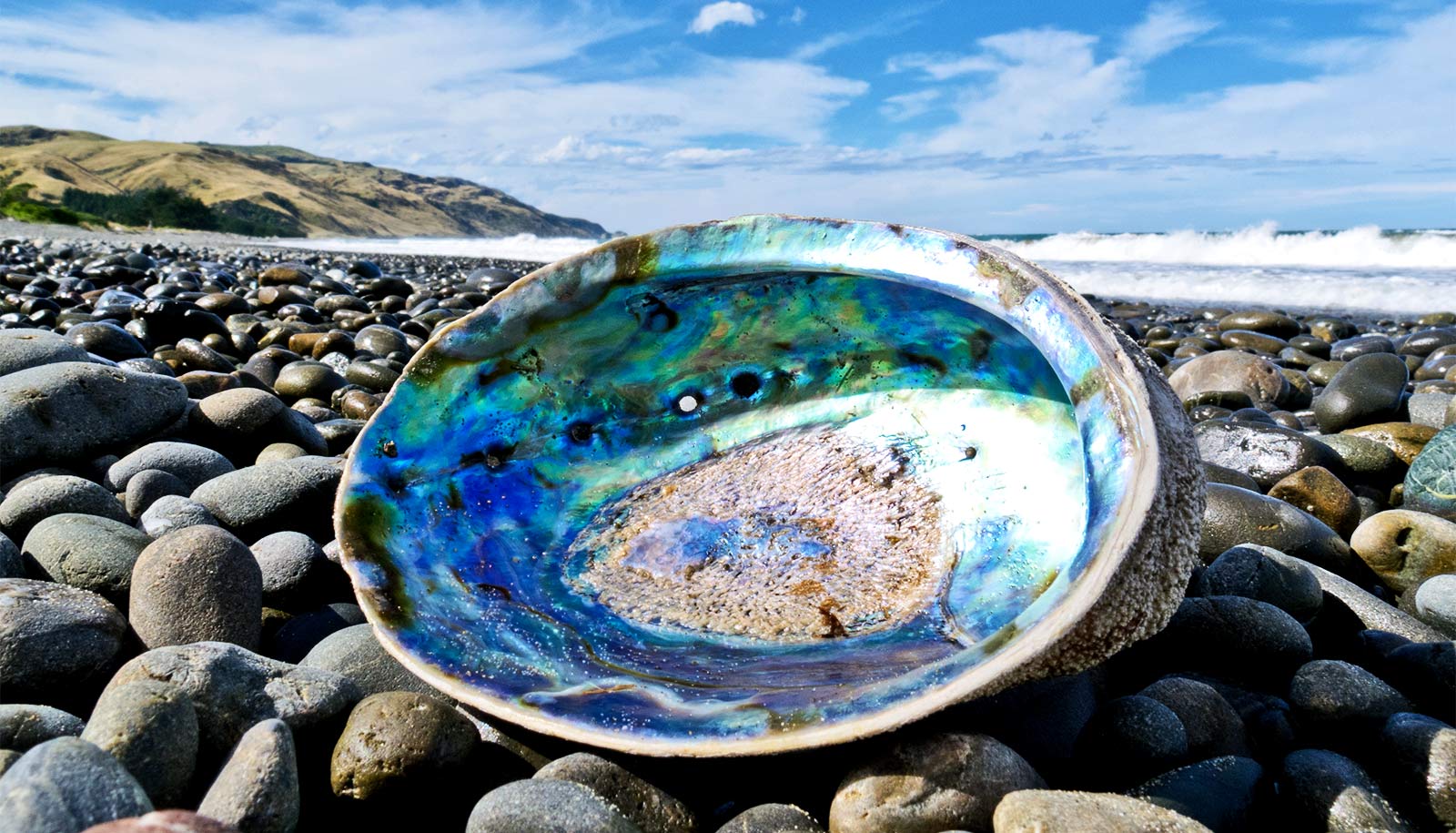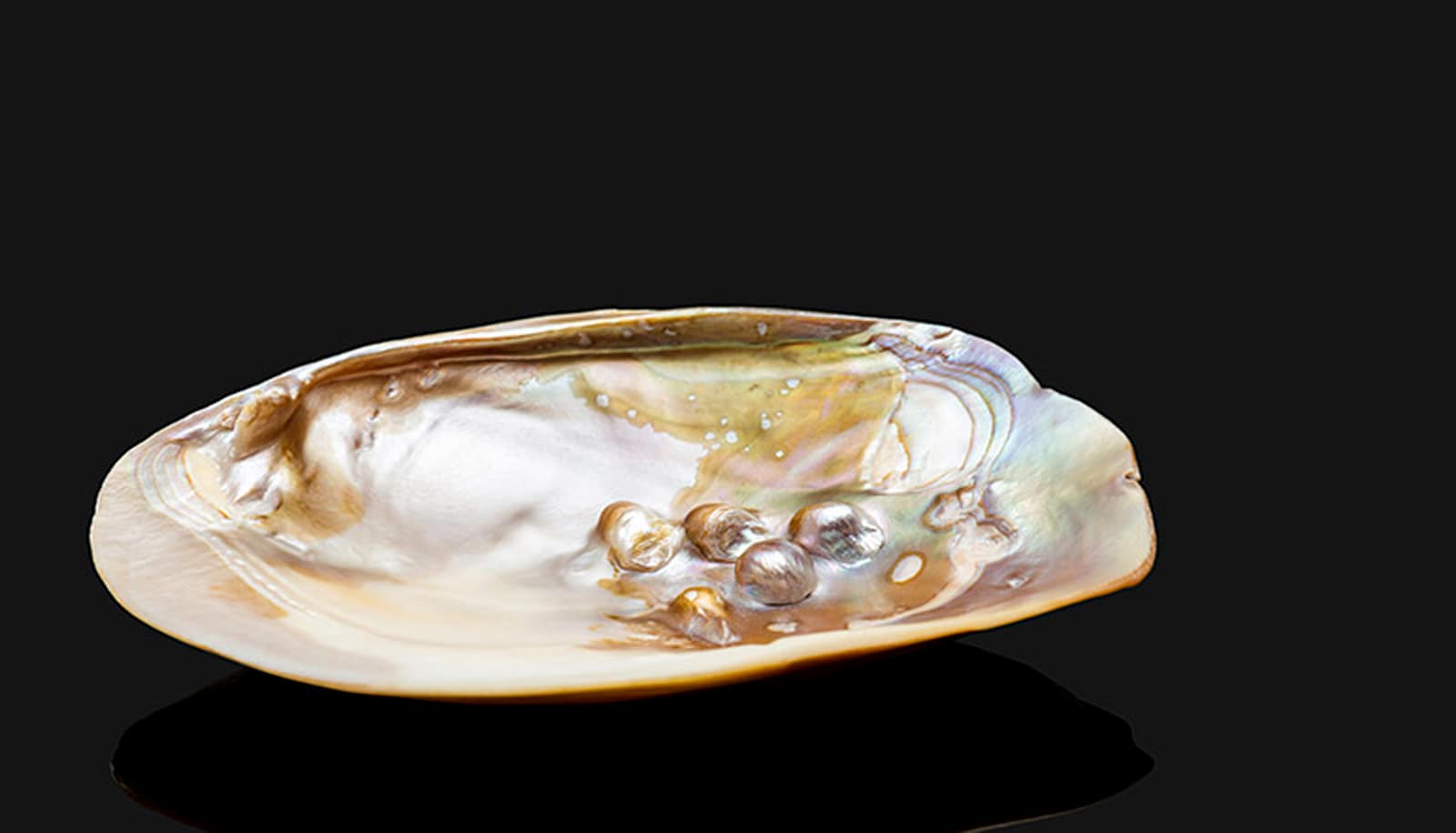Scientists finally know how nacre, the world’s toughest material, stays so strong.
Nacre is the rainbow-sheened material that lines the insides of mussel and other mollusk shells. More commonly known as mother-of-pearl, nacre’s combination of hardness and resilience has mystified scientists for more than 80 years.
If humans could mimic it, it could lead to a new generation of ultra-strong synthetic materials for structures, surgical implants and countless other applications.
“We humans can make tougher materials using unnatural environments, for example extreme heat and pressure. But we can’t replicate the kind of nano-engineering that mollusks have achieved. Combining the two approaches could lead to a spectacular new generation of materials, and this paper is a step in that direction,” says Robert Hovden, assistant professor of materials science and engineering at the University of Michigan.
Researchers have known the basics of nacre’s secret for decades—it’s made of microscopic “bricks” of a mineral called aragonite, laced together with a “mortar” made of organic material. This bricks-and-mortar arrangement clearly lends strength, but nacre is far stronger than its materials suggest.

The researchers used tiny piezo-electric micro-indenters to exert force on shells of Pinna nobilis, commonly known as the noble pen shell, while they were under an electron microscope. They watched what happened in real time.
They found that the “bricks” are actually multisided tablets only a few hundred nanometers in size. Ordinarily, these tablets remain separate, arranged in layers and cushioned by a thin layer of organic “mortar.” But when stress is applied to the shells, the “mortar” squishes aside and the tablets lock together, forming what is essentially a solid surface. When the force is removed, the structure springs back, without losing any strength or resilience.
This resilience sets nacre apart from even the most advanced human-designed materials. Plastics, for example, can spring back from an impact, but they lose some of their strength each time. Nacre lost none of its resilience in repeated impacts at up to 80% of its yield strength.
What’s more, if a crack does form, nacre confines the crack to a single layer rather than allowing it to spread, keeping the shell structure intact.
“It’s incredible that a mollusk, which is not the most intelligent creature, is fabricating so many structures across so many scales,” Hovden says. “It’s fabricating individual molecules of calcium carbonate, arranging them into nano-layered sheets that are glued together with organic material, all the way up to the structure of the shell, which combines nacre with several other materials.”
Hovden believes humans could use the mussel’s methods to create nano-engineered composite surfaces that could be dramatically lighter and stronger than those available today.
“Nature is handing us these highly optimized structures with millions of years of evolution behind them,” he says. “We could never run enough computer simulations to come up with these—they’re just there for us to discover.”
The study appears in Nature Communications. Collaborators are from the University of Michigan, Macquarie University in Australia, Université de Bourgogne Franche-Comté, and University Erlangen-Nürnberg.
The research was performed on electron microscopy instruments at the Michigan Center for Materials Characterization. The Mediterranean Pinna nobilis mollusk researchers studied is a protected species due to recent ecological threats.
Source: University of Michigan

